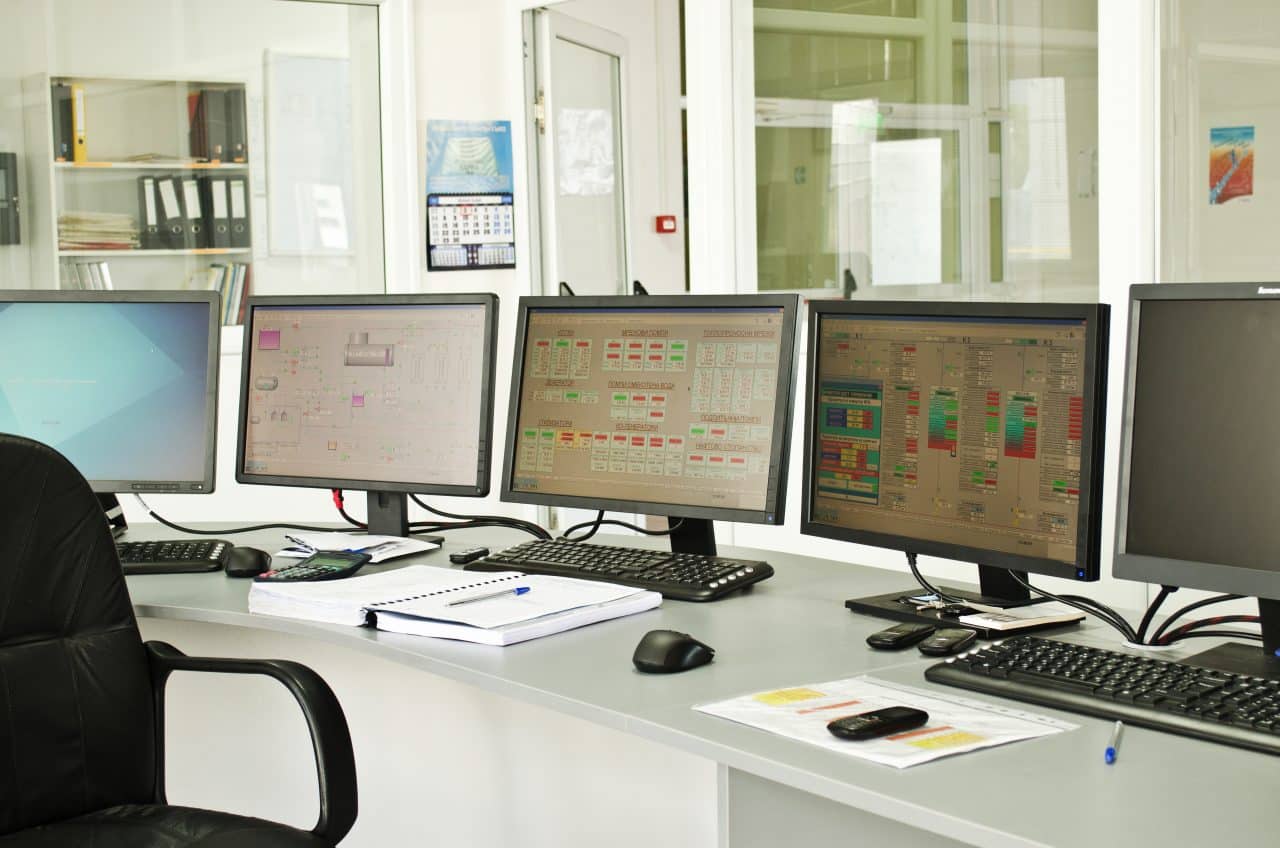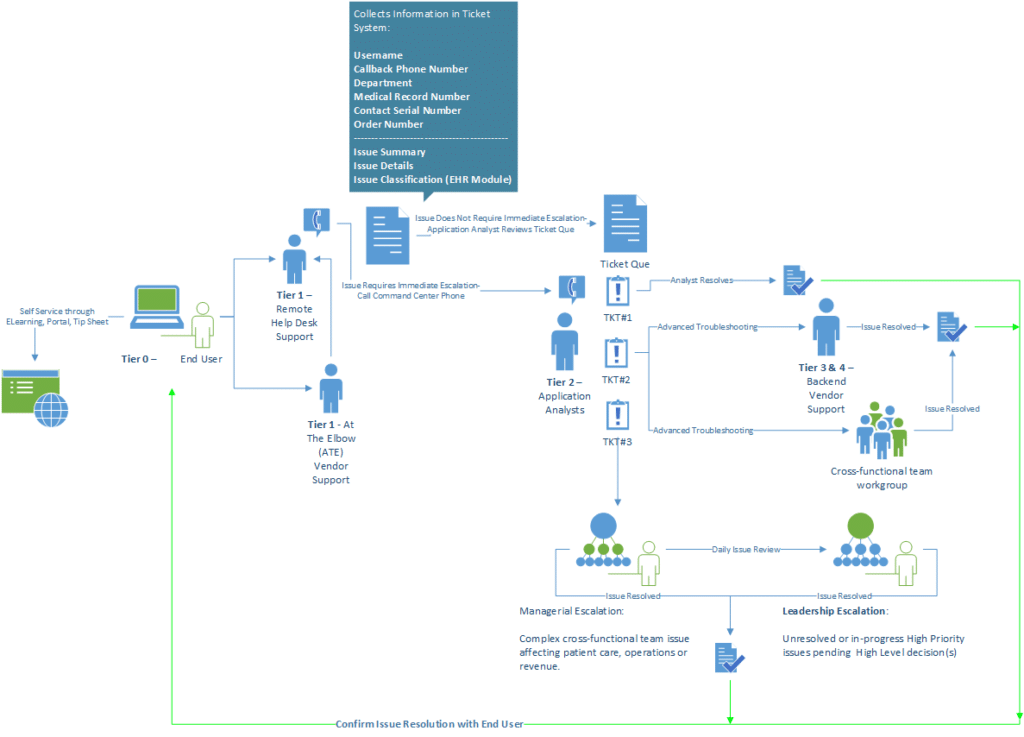Demystifying Command Center Coordination

“If you build it, they will come”
Command Center planning, design and setup is a critical but abstract component necessary for any large, temporary support operation. In the healthcare industry, this often means a large Electronic Health Record (EHR) implementation or upgrade. The need for “Command Centers” in the business environment was not always clearly defined and often an underestimated body of work. Modern inspiration of IT Command Centers comes from the Incident Command System Structure produced by the U.S. based Emergency Management Institute.
Sou2026what exactly is a “Command Center” in the healthcare project go-live environment?
People often associate the phrase “Command Center” with a physical space, full of KPI dashboards, phones ringing and alarms going off. In reality, it is a support strategy and communication structure used by an organization to resolve critical issues associated with a large-scale change. A large EHR implementation certainly qualifies as such an event!
Define Critical Support Tiers
Assigning structure to the key support activities can help reduce gaps in the issue communication workflow. Defining the staff involved in each ITIL support tier can also assist in architecture discussions along with where each of these tiers are physically located.
Tier 0: User Self Service – What access to self-help do your users have? Go-Live Guides? Tip Sheets? E-Learning intranet pages?
Tier 1: At-the-Elbow (ATE) support and Super Users – These two groups provide in-person support onsite. These frontline staff should be used to assist with workflows, reinforce training, and as a first point for triage between education needs vs. something truly broken in the system. The Help Desk answers calls and logs tickets from end users and onsite Tier 1 support (Super Users and ATEs). This helps buffer communications between end users and analysts to allow them to assign priority and troubleshoot issues. Typically, beyond password resets, there is not a target for “first call resolution” in a go-live command center.
Tier 2 – The Command Center application analysts who prioritize, troubleshoot and escalate issues.
Tier 3 & 4 – Highest level of application analyst support, typically third party vendors outside the organization that can modify backend configurations for a specific software.
Leadership – Discuss escalated issues known to affect safety, revenue or operations. Typically includes representation from project team, clinical and operational leadership.
Physical Architectures for Consideration
At a recent client, multiple architectures were used across three years of inpatient and ambulatory go-lives. As the system matured, we moved from a more physical, all-in-one presence to a further virtualized and distributed approach with each successive go-live.
Rather than prescribing a distinct “best practice” to a Command Center, leadership discussions should help direct the best approach for an individual organization. Command Centers should create an environment that enhances the quality of communication across teams. The stage and maturity of a project may also influence the Command Center approach. For example, a “Big Bang” style implementation might benefit from a more centralized Command Center physical architecture vs. a more flexible design from health system with a phased EHR rollout. Physical architectures for consideration include:
All-In-One-(Large Primary Medical Center)-all critical support activities located onsite in close proximity to each other. This is the most traditional approach. This design can assist organizations in identifying issue communication gaps quickly through more frequent face-to-face communication. There is also the benefit to the “show of force” with the large onsite presence to enhance the end user perception of being supported.
Partial Onsite (Ambulatory Go-Lives)-Command Center remains in one central location with most of Tier 2, some Tier 3 and leadership. Geographically dispersed practices and clinics are supported through Tier 1 and remote support. Tier 2 response teams are dispatched to troublesome areas and regular rounding of leadership occurs at critical “hot spots“.
Geographically Distributed (Multiple Community Hospitals)-a distributed approach to Command Center design with small command centers or response teams at each site. This could also include a centralized command center offsite with leadership representation at each hospital. As the command center distribution of resources increases, the communication and ability to collaborate becomes more complicated. For this reason, this model is best used in a more experienced and mature organization with regards to support.
Issue Communication Strategy
Mapping out the entire issue communication workflow from the end users up to leadership escalations can help detect potential gaps. The diagram at the end of this blog post provides an example of an issue communication workflow used at a recent client. The three critical points for issue communication and resolution are:
Quality of information when the issue is reported. Use of templates to gather information needed to troubleshoot an issue can help decrease the number of call backs to the end user to gather additional information to understand the issue. Contact information both immediately and into the next shift is also important to prevent delays in issue resolution.
Handoffs between application teams. The worst thing that can happen to a reported issue is that it gets reassigned back and forth between project teams with no verbal communication. Teams should have a quick verbal conversation before handing off an issue to another team to ensure it is acknowledged and received.
Closing the loop with the end user. It takes time but speaking with the end user to acknowledge that their issue has truly been resolved is critical both for the end user to see the value in the support and to prevent proliferation of workarounds used during the time the issue was being resolved.
Command Center Checklist
Plan, Design, Communicate and Coordinate
Below is a list of the most critical boxes to check during a Command Center build out:
Logistical Areas
- Parking, food, drink, facilities, security (badging), and environmental services
- Signage for teams, rooms, facilities, seating
- Contact information (facilities, clinical, operations & IT)
- Buildout team coordination (field operations, telecommunications, network, facilities)
Consider the needs of the physical space in-use and try to visualize what a day in the life of a staff member in the command center looks like. Identify the assumptions that exist to explore logistical needs (ability to park, walk into the building, find the quickly room, etc.).
Resources and Scheduling
- Staffing requirements and schedule for each support tier at each location
- Staffing adjustment plan for during cutover and go-live
- Diagrams, timelines and reminder communications
How will each team’s staff be divided up by location and time? What is the leaderships schedule to provide ample coverage at a high level? Is it critical some applications be physically nearby each other?
Physical Space Buildout
- Monitors, power (including expected total power load for the rooms), network infrastructure (wired & wireless), printers.
- Signage, cable management, office supplies
- Tables, chairs, amenities (coffee & fridge)
What equipment, technology and supplies are needed in the command center to promote an effective work environment? What amenities can be provided to make the environment more comfortable?
Command Center Operations
- Communication strategies (meetings, newsletters, tiered support)
- Statistic tracking (issue count by team, calls, EHR KPIs)
- Meeting schedule
What communication tools are used to engage end users such as nurses, physicians, front-desk staff and billing staff? What meetings are scheduled to manage the go-live for the IT team?
Financials and Cost
- Contracted support needs
- Cost of food, drink, parking, transport
- Cost of physical buildout and office supplies
- Cost of hoteling accommodations for geographically dispersed staff
Costs to build out Command Center space can be significant, but provide great benefit with the issue resolution rate. What negotiations need to occur with third parties to reduce spending (contracted hotels, food, and nearby parking garages).
Overview
The overall goal of the Command Center coordinator is to visualize the needs of the facility, project team and leadership to ensure a smooth environment where teams can communicate and collaborate effectively to resolve critical issues. The guidelines and checklists above should help guide high level discussions and provide a great start to the details during discussions on Command Center strategy. If the go-live command center is appropriately treated as a project within a project, the command center and structure can help ensure a successful event.


























